Classic Moog Synths of the ‘70s and ‘80s: Moog Without Bob
Late-period classics including the Prodigy, Source, Memorymoog, and more!
Moog released some of its most iconic synthesizers after Bob left in the late 1970s. These are the classic Moog synths made without Bob.
Classic Moog Synths of the ‘70s and ‘80s
We tend to think of Moog Music MK1 as the golden age of Moog, with Bob and team cranking out indisputable icons like the Minimoog and all the different modular systems. Nostalgia can be a funny thing, though. Bob Moog actually left Moog Music in 1977, a full 10 years before the company went out of business. And yet, in that time, the company released some of its most well-known instruments.
Today, let’s take a look at five classic Moog synths of the ‘70s and ‘80s, ones that were made after Robert Moog himself had left for greener pastures.
A Little History
But first, a little history. Bob started Moog the company in 1953 as a way to sell theremins. By the mid-‘60s, he was making modulars full-time but, being an engineer and not a businessman, the business side of things was never airtight. As he himself said in Mark Vail’s book, Vintage Synthesizers, “From the point of view of competence, we were never a business. Never.”
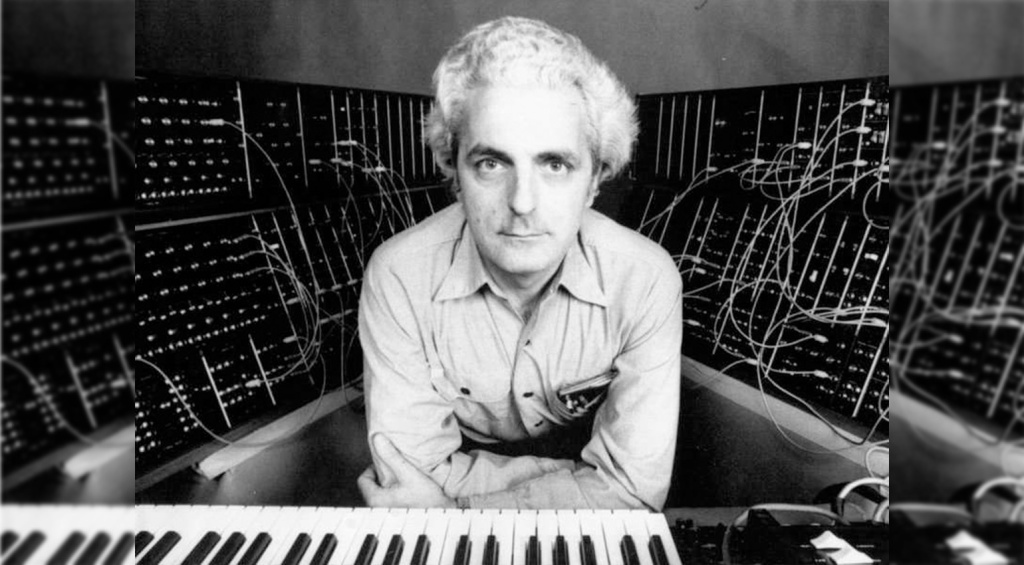
After a few different buyouts, Moog Music ended up in the hands of Norlin Industries in 1973. Bob stayed on as an employee, running the R&D department, for four more years. What prompted him to leave? “What prompted me to stay that long, more like it,” he quipped in Vintage Synthesizers. “I had a four-year employment contract I had to stick out in order to cash my stock in. I would have left before, if I could.”
And that was the end of Moog Music too, right? Surely the company would be lost without its founder. Not necessarily. It certainly had its share of oddball instruments, like the Opus 3, Liberation keytar, and Realistic Concertmate MG-1 aka the Radioshack Moog, but it also released some real winners at the time – some real classic Moog synths.
Classic Moog Synth: Multimoog
In the 1970s, everybody wanted a Minimoog. Not everyone could afford one, however. For them, Moog first made the Micromoog and then in 1978, its slightly better-endowed sibling, the Multimoog.
More than just a cut-down Minimoog though, the Multimoog offered some unique synthesis and performance options of its own. Each of the two oscillators featured continuously variable waveforms, from sawtooth through to a narrow pulse, as well as a dedicated LFO with square, triangle, and sample & hold. It also had an audio-in jack for processing through the 24db/Octave ladder filter and external CV/gate control. Although it didn’t have a pitch wheel, you did get a ribbon controller for pitch bends. It could also claim to be one of the first synths with aftertouch capability.
The Multimoog may not be one of Moog’s triumphs but it’s a solid synth in its own right and worthy of the name Moog – even if Bob was no longer around by the time of its release.
Classic Moog Synth: Polymoog Keyboard
If the Multimoog was a beefed-up Micromoog, the Polymoog Keyboard was a slimmed-down Polymoog. Identified by its model number 280a (as opposed to the original Polymoog’s 203a), the 1978 Polymoog Keyboard is possibly even more famous than the first thanks to the inclusion of the Vox Humana preset as rinsed by Gary Numan in the song, “Cars.”
Aimed at players who wanted full polyphony but didn’t need to program their own sounds, the Polymoog Keyboard offered limited synthesis options but 14 presets, including Strings 1 and 2, Chorus Brass, Pipe Organ and of course, Vox Humana.
Although considered extremely unreliable at the time, both Polymoogs were popular with musicians because of their full polyphony – even if this was achieved with divide-down technology like an organ.
Classic Moog Synth: Prodigy
There was something of a monosynth boom in the late ‘70s, with classics like Korg’s MS-20, Roland’s SH-2, and Yamaha’s CS-15 all dropping within a few years of each other. You can also add the Moog Prodigy to that list, surely a classic Moog synth if there ever was one.
With over 11,000 units sold (almost as many as the Minimoog itself!) during its run from 1979 to 1984, the Prodigy has found its way into studios the world over. Including that of one Liam Howlett, who liked it so much that he named his band after it.
What was so special about the Prodigy? In a word: the sound. A no-frills monosynth, it gives you two syncable oscillators, a ladder filter, two envelopes, an LFO and that’s pretty much it. No white noise generator, no fancy modulation routings. Even the envelopes are limited to ADS with a single release on/off switch shared between the filter and volume envelopes. And yet it sounds. So. Good. Beefy and massive, it’s definitely a Moog classic.
Classic Moog Synth: Source
New decade, new look. The Source, which debuted in 1981, is unique in the Moog catalog in that it looks nothing like what you expect a Moog synthesizer to look like. First of all, there’s the color scheme. Silver and blue with hints of yellow and orange, it’s very different from the typical Moog black. Then there’s the distinct lack of knobs. With membrane buttons instead of pots, you use a single encoder to dial in changes one parameter at a time. Oh so modern.
On the inside though, it was very much a Moog – almost slavishly so. Two VCOs, with a ladder filter, two ADSRs and an LFO, it was typical Moog. However, there were a few concessions to modernity: the Z80 chip inside (the same as in the Prophet-5) let you save patches for the first time (up to 16!) and there was also a basic sequencer. Later versions even added CV/gate control, which is how New Order used one for the iconic bassline in “Blue Monday.”
The Moog that synthpop and new wave bands loved to use, just because it’s an outlier that doesn’t mean it’s any less of a classic Moog synth.
Classic Moog Synth: Memorymoog
The final synthesizer of the first era of Moog Music was also the company’s first polyphonic synthesizer. This is, of course, the Memorymoog, a legendary instrument whose influence can still be felt even in the 21st century.
Big in every way, the Memorymoog offered six voices of polyphony, with each voice containing three oscillators like a Minimoog. This gives the instrument a massive sound, despite the fact that the VCOs are based on Curtis CEM 3340 chips and not discrete Minimoog oscillators. However, the filters are discrete and are the usual – and much beloved – ladder type. If that’s not big enough, there’s a mono mode with a unison function that can turn the Memorymoog into an 18-oscillator monosynth.
While for many the bigness is the whole point, others occasionally complain that the Memorymoog is so beastly it’s hard to fit it into a mix. Whatever your opinion, this is definitely a classic Moog synth.
Moog Music Today
The first era of Moog Music ended in 1987 when the company went out of business. Robert Moog got the name back in 2002 and, although he passed away in 2005, the company continued, eventually being acquired by inMusic in 2023.
Although this original Bob-less period isn’t as celebrated as others, some of the technology and design choices of the time live on today, in instruments like the One and Muse.

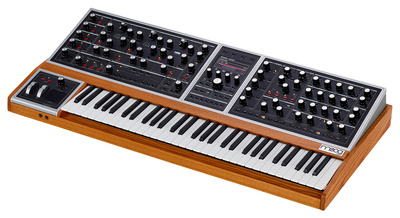

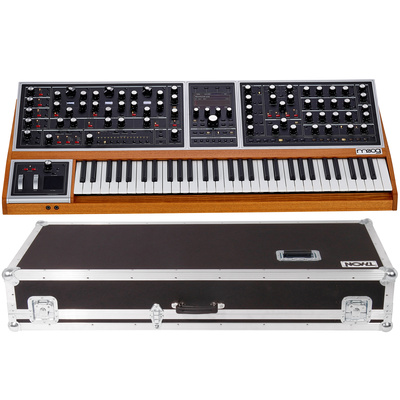

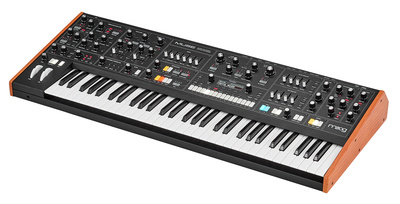

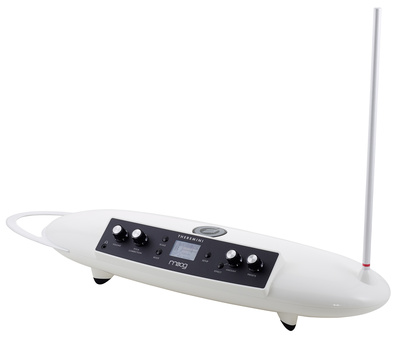

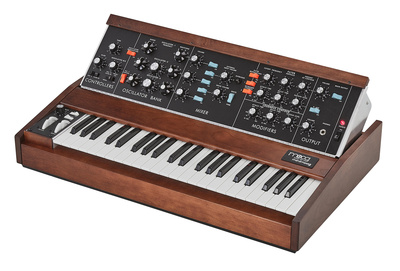
More Information
- Moog Music home page
- All about Moog
- All about synthesizers
*Note: This article contains advertising links that help us pay for this site. Don’t worry: the price for you will always be the same! If you buy something through these links, we will receive a small commission. Thank you for your support!
7 responses to “Classic Moog Synths of the ‘70s and ‘80s: Moog Without Bob”
 4,3 / 5,0 |
4,3 / 5,0 | 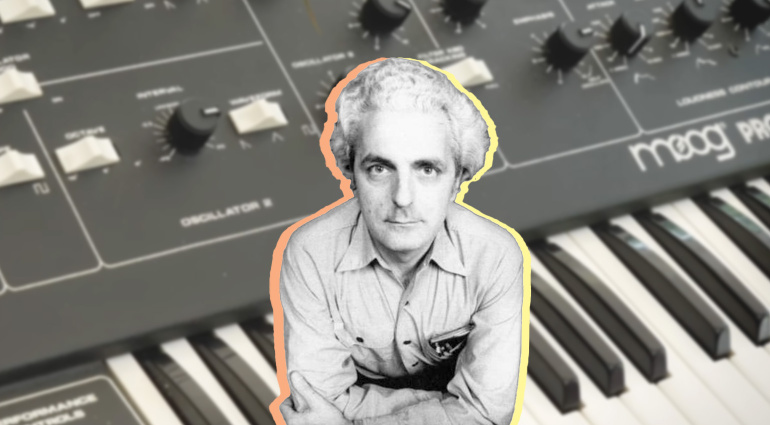


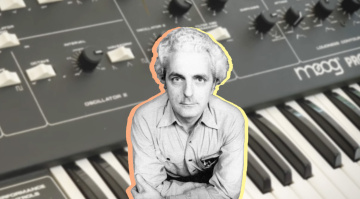

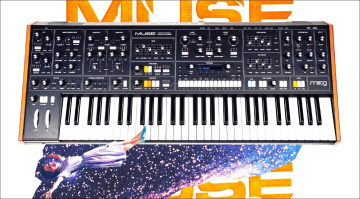
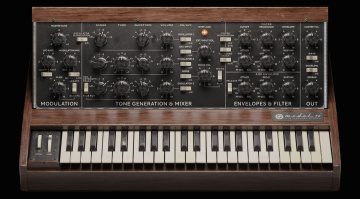
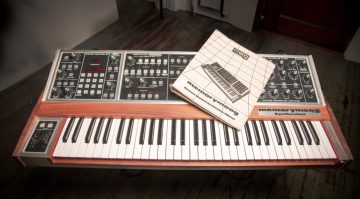
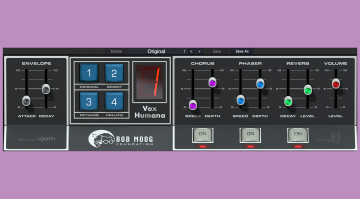
it’s pronounced Moooooog not Mogul. stupid people. Bob Mogul he wasn’t a fat cat wall street banker he was the synthesist genuine of the generation
Bob’s daughter has a name plaque on her desk that reads… “As in Vogue”.
End of debate.
Bob was famously tolerant of both pronunciations, so maybe try to be more like Bob.
As someone with an equally mispronounced surname, I’ve tolerated a gazillion different mispronunciations.
Mispronouncing it when you know how it’s supposed to be pronounced is just disrespectful 🙂
As Jason said…Bob Moog said that half his family pronounce it Mogue and the other half Moog….he didn’t care which way it was said.
An interesting selection. I’d swap out the multimoog for the Rogue (which was purportedly named so, to rhyme with the pronunciation of Moog), as none of the multimoogs I’d encountered looked or felt like they were working well (I think the aftertouch & ribbon didn’t stand the test of time very well). unwell vintage analog means big bills.
Ergo, enter the Rogue, which is as readily (if not more so) available as the prodigy. Whilst it’s a bit more basic, it’s still a solid synth which shouldn’t break your wallet (and heart) as and when it needs fixing.
I like the Opus 3, is it considered a bad syntb?
You are currently viewing a placeholder content from Facebook. To access the actual content, click the button below. Please note that doing so will share data with third-party providers.
More InformationYou are currently viewing a placeholder content from Instagram. To access the actual content, click the button below. Please note that doing so will share data with third-party providers.
More InformationYou are currently viewing a placeholder content from X. To access the actual content, click the button below. Please note that doing so will share data with third-party providers.
More Information